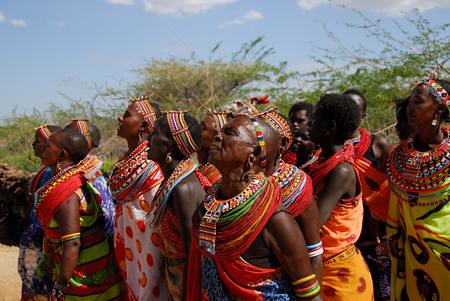Societies of Leading Ladies

February 9, 2020
In the United States, women make up only 23.6% of Congress, 25% of the Senate, and 23.2% of the House of Representatives. In addition, there has never been a female president. This same pattern is repeated in many countries that are often called “developed,” such as Spain, Japan, and Russia. Because people often see these countries as modern and progressive, they often overlook the fact that women are very infrequently placed given the same level of authority as men. Meanwhile, there are many examples of matriarchies, which are societies with women in charge, in the world today. These countries, while not often heard about, are very interesting for a number of reasons.
People living in the area of southwest China called Mosuo have always done things differently from the rest of China. They even call themselves by another name, the Na. In their society, women are at the head of each family. This means that women are expected to handle property and politics, while men usually tend to the animals. Lineage, or the descent of a line of inheritance, is passed from a woman to her children. Furthermore, women do not typically have husbands, and children usually only have their mother as their sole caretaker. These practices, while they seem unusual to some, are absolutely normal to the people living in Mosuo, China. Evidently, the Na society places value in women which is very uncommon anywhere else.
The village of Umoja, Kenya is another example of a matriarchal society. This village was actually established very recently, and for a specific reason. In 1990 a group of women founded Umoja as a refuge for victims of gender-based violence. This village stands out among all other societies for one reason- no men live in the village. Women have been traveling to Umoja in order to escape the horrendous mistreatment that they faced in their hometowns since the village’s origin. Women in Umoja are given freedoms that they would not otherwise have, such as the abilities to make money, go unmarried, and have children with whoever they please. The village’s main source of income is tourism, as people from all over the world visit the village in order to view the harmonious culture and buy hand-made jewelry. The people of Umoja village also travel to neighboring villages to educate people about women’s rights, and they raise their own children to have respect for women. The Umoja village is a beautiful example of women taking charge. Through the harmony and hard work of these powerful women, lives will change for the better in the years to come.
The Mingangkabau is the world’s largest matriarchal ethnic group. They mostly reside in Indonesia. The Mingangkabau see the woman, or mothers, of society as the most valuable. In Mingangkabau society, people live in large houses called “Rumah Gadang.” In each house, a head woman is in charge over the rest of the people in the house. Property is always passed through the female members of a family. Because women are busy with maintaining their family structure and finances, men take on the responsibility of leaving their home as teenagers and traveling to other countries to educate themselves. Due to the men’s travels, Mingangkabau society is well known in numerous countries. For many years, people have been fascinated by the atypical role of Mingangkabau women in society. They prove that women have always had the ability to establish long-lasting, powerful societies.

